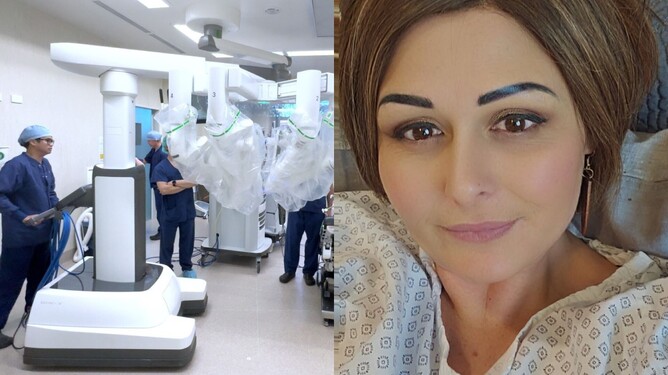As a busy kindergarten teacher and mum of two, Taumarunui woman Samantha Akhtar can’t afford to call in sick – except that’s exactly what she was having to do over the past 18 months as she battled with severe pain brought on by endometriosis.
Samantha was living in near constant agony, with one ovary attached to her uterus, taking countless painkillers to get through each day for her family and work commitments.
“Let’s just say it wasn’t pleasant, what was happening in my body,” she says.
The wait to see a surgeon had stretched to over a year, something Samantha found hard to bear given the pain she was experiencing. With a long wait in front of her in the public system, Samantha’s GP referred her to Braemar Charitable Trust’s community surgery programme, which enables free surgeries for eligible patients. These patients are people unable to access timely care in the public system and don’t have health insurance, ACC cover, or financial means to pay privately.
Samantha was referred to Waikato gynaecologist Dr Tarek Saleh, who not only would be performing the surgery pro bono alongside anaesthetist Rob Martynoga, but would be doing the surgery – a hysterectomy – robotically.
Relief for Samantha and a cutting-edge approach
When Dr Saleh performed Samantha’s community surgery, he simultaneously became the first surgeon to undertake a robotic surgery in the Waikato region.
The robot was recently purchased by Braemar Hospital and is the first surgical robot in the region.
“I feel really lucky being the first surgeon to do robotics in the Waikato,” he says. “It will be wonderful to see many more surgeons follow.”
There are several reasons for recommending robotic surgeries to patients, mostly from a patient recovery perspective. The precision of the robot means quicker recovery times, less post-operative pain, and reduced risk of complications such as haematomas and infections. The minimally invasive approach uses smaller incisions, resulting in less scarring and tissue trauma.
When Samantha was presented robotic surgery as an option, she was intrigued. “That sounds cool,” was her immediate reaction.
When Dr Saleh explained the procedure to Samantha, she was surprised – “oh really” – but became excited about being the first. He walked her through the differences from traditional laparoscopic surgery, explaining the potential for quicker recovery and less blood loss.
But how does it work? Surgeons control the robot from a special console, using hand movements that are translated into precise movements of tiny surgical instruments. The 3D camera gives them a magnified view that’s clearer than the human eye can see – incredible technology in the hands of skilled surgical teams.
Looking forward
While Dr Tarek is fielding calls from patients asking if their surgeries can be done robotically, Samantha’s recovery has been going well.
She hunts, rides motorbikes, and can’t wait to return to the active life she loves.
“This surgery has given me the freedom to be me again – and that is really huge.”
And she has high praise for everyone involved in her surgery. “As soon as I was in the room, I had the conversation: how are you feeling, what do you need? Everyone in Braemar is in all the right places for what they do – they were all amazing.”
About Braemar Charitable Trust
The Trust is the 100% owner of Braemar Hospital, one of the largest private hospitals in New Zealand. The Trust's vision is to improve health access and equity, and it has a range of activities to deliver on its charitable purpose to improve health outcomes in our community.
One of these is the Community Surgery Programme, where specialists (surgeons and anaesthetists) donate their time and expertise to perform free surgeries and health interventions for eligible patients.
In the most recent financial year ended 31 March 2025, Braemar Charitable Trust enabled 159 free surgeries for those in need, an increase of 124% on their previous year. The Trust spent $88,000 on associated costs but estimates these surgeries and procedures would have cost $500,000 in real terms.

